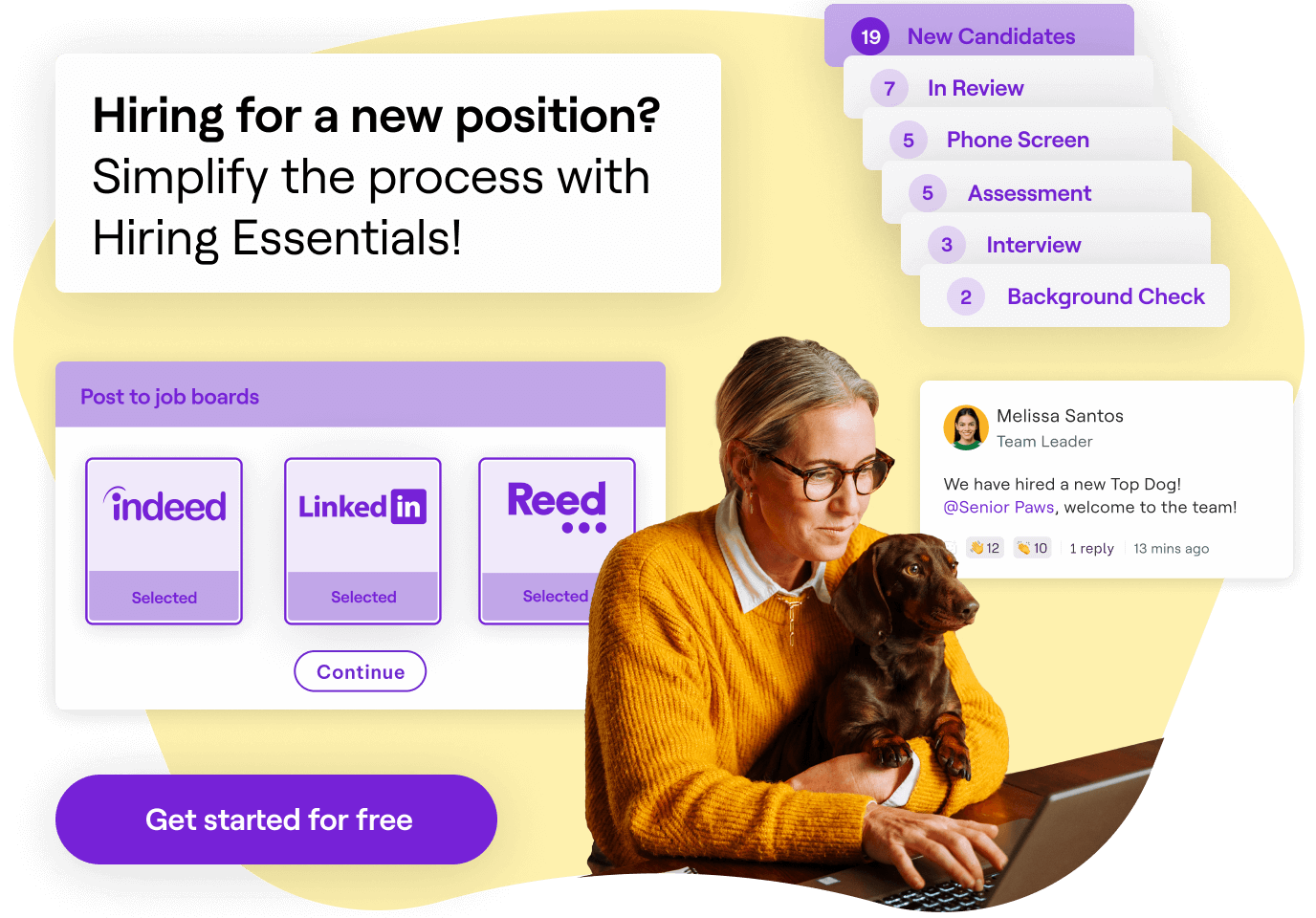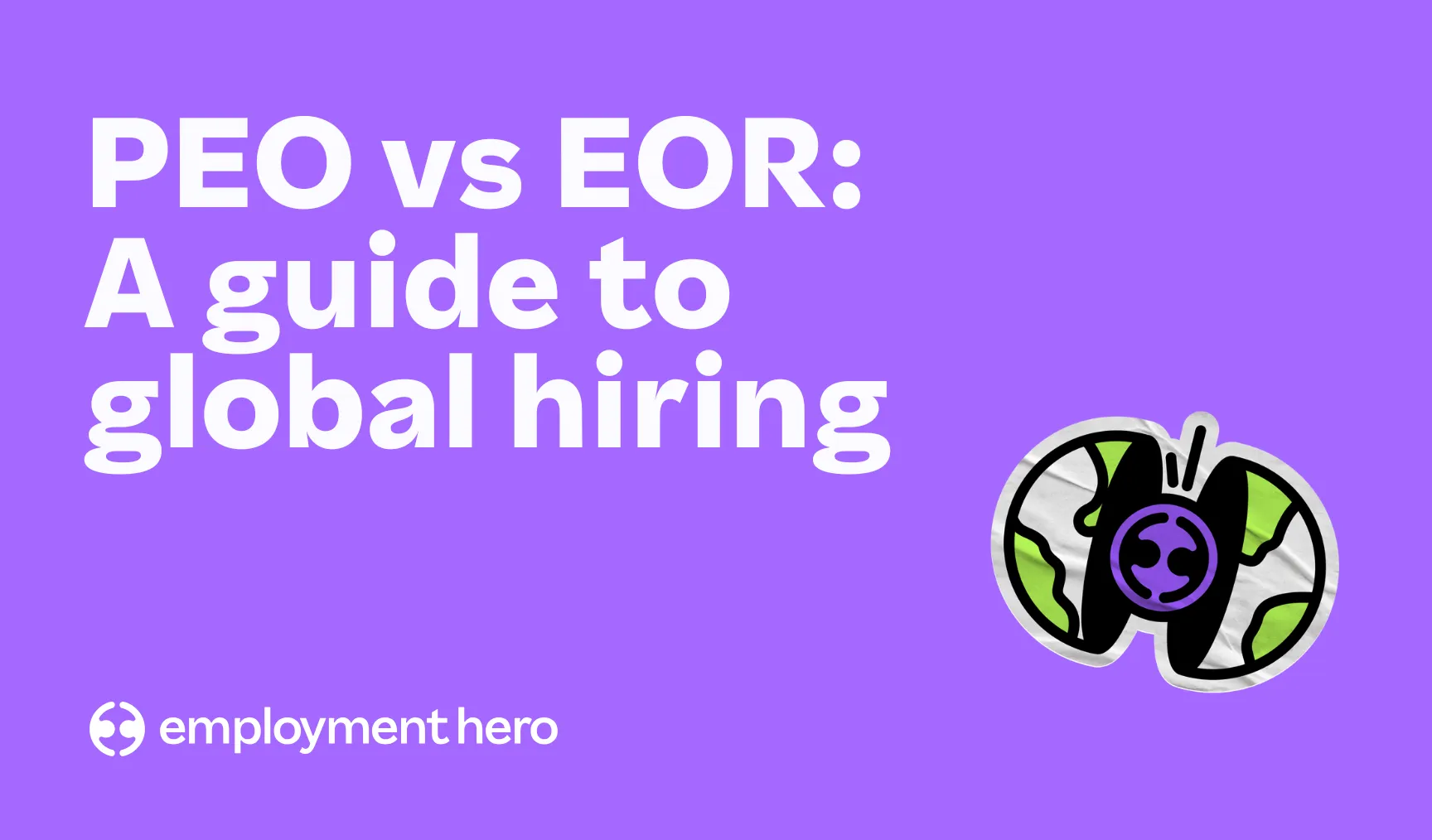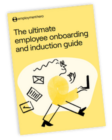10 Common Employee Induction Mistakes
So, what are the key mistakes every employer should avoid during the employee induction process and when introducing a new staff member into the team? Let’s see…

There’s plenty of content out there on making sure your new employee has an awesome first day, as well as tips for a seamless onboarding and work induction (like our HR onboarding checklist). But before we take a look at employee induction mistakes, let’s briefly recap what a job induction is.
What is an induction plan for a new employee?
An HR employee induction is a process of getting new employees up to speed with their job and working environment. It’s important on induction day that you provide new employees with valuable information, to make them feel comfortable and familiar with their new role. An induction plan simply outlines the steps and stages of the employee onboarding process. Ensuring everything is a set process, and that no areas of the induction process are overlooked or missed.
Creating an Employee Induction Plan
Creating a thoughtful employee induction plan isn’t just about ticking boxes, it’s about setting the tone for a new hire’s journey with your company. A good induction plan acts as a roadmap, guiding your new team member through their first few days and weeks, and ensuring they feel confident and supported from the start. Here’s how to design an effective plan:
- Pre-Induction Preparation
- Set up their workstation or ensure remote access is ready, including all tools, equipment, and login credentials.
- Prepare a welcome pack with helpful resources and personal touches (e.g., a handwritten note or company swag).
- Share an induction schedule in advance, outlining key activities for their first week.
- First Day Focus
- Greet them warmly and introduce them to the team.
- Provide a tour of the office or a virtual orientation for remote workers.
- Walk them through the day’s plan to create a sense of structure and ease first-day nerves.
- Conduct a brief session on company values, culture, and expectations.
- First Week Activities
- Balance onboarding activities with time for independent learning.
- Schedule team meetings and 1:1 sessions with key colleagues or managers.
- Include training on tools, processes, and any unique jargon or acronyms.
- Share a “cheat sheet” or glossary to help them navigate company language.
- Personalisation and Support
- Assign a buddy or mentor to guide them through the onboarding process.
- Encourage open communication by scheduling regular check-ins to address questions or concerns.
- Provide opportunities for them to give feedback on their induction experience.
- Long-Term Integration
- Set clear expectations for their role and key responsibilities.
- Outline short-term goals for their first 30, 60, and 90 days.
- Continue offering support through ongoing training, regular progress reviews, and professional development opportunities.
- Finishing Touches
- Keep it personal! Consider a welcome email or introduction to the wider team.
- Celebrate their first milestones, like completing their first week or finishing training sessions.
A well-planned induction ensures new hires feel welcomed, equipped, and ready to succeed, setting the stage for long-term engagement and productivity.

Common employee induction mistakes
So what are the key mistakes every employer should avoid during the employee induction process and when introducing a new staff member into the team? Providing a great first impression to a new starter is vital for your business – it ensures a low staff turnover rate and overall higher employee satisfaction, engagement and wellbeing. That’s why I’m here to tell you all the BIG employee onboarding and company induction mistakes I’ve seen over the years, so you don’t make them when the time comes.
Mistake #1. Not following up with a new starter in the lead up to their first day
So you’ve made the candidate a job offer, set a start date and then… radio silence. Why? I’m not saying you need to pester the poor person every day until they start with countdown-like announcements – but checking in a few days before their first day just to remind them of anything important they might need to bring, or giving them a run through of how the day will go might help them feel more at ease. Starting a new job can be nerve-wracking so making sure they’re at ease before they start goes a long way.
Mistake #2. Not being prepared for your employee induction
Always be prepared. If someone is coming to start a new job, it’s your responsibility to make sure they have everything they need to get up and running as quickly and seamlessly as possible. This includes;
- Any uniform they might need
- Equipment such as laptops, safety equipment, tools etc
- Login details or access codes to different company systems
It’s not the new starter’s job to sit on the phone with IT for hours on their first day because they can’t log in to your super-secure system. And they shouldn’t have to bring in their personal laptop because you forgot to order them one. Make sure their workspace is clean, tidy and set up ready to go! Remember, it’s all about setting a good first impression so another tip is to make sure all the equipment you have given them actually works. In our employee onboarding guide, we talk in more detail about nice touches you can make to really make a good first impression on an employee’s first day. Insider tip: Use our customisable onboarding and induction template to create a great first day for candidates, every time.
Mistake #3. Overloading your new starter with information
Don’t overwhelm your new starter with too much information. This could result in them feeling disheartened and that they’re not a good fit for the role. Instead of having a full-on induction day, why not try an induction week? So that your new starter has plenty of time to learn the ropes at their own pace. Insider tip: Something we implemented earlier in the year at Employment Hero HQ is that we now start all new employees on a Wednesday. This means they have 3 days of training, induction sessions and welcome meetings that teach them everything they need to know about the business and their new role. They then have the weekend to digest it all, do some independent work if they need to and then come in fresh on a Monday ready to deep dive into their new role. Don’t just think of work induction as ‘one of those things you have to do’. Instead, think of how you can create an induction journey for your new starters that’s efficient but also helpful and manageable.
Mistake #4. Handing them a mountain of paperwork
The classic mountain of paperwork imagery that we all know and love is back… but it’s still as true as ever. No new employee wants to start off their new career with a large amount of paperwork to sieve through. This is where our paperless onboarding solution can help you eliminate this stack of paperwork for your new starters – recruiting, onboarding, and managing employees can be done 100% digitally with our cloud based hr software. After all, new starters want to be doing more exciting things on their first day, and focus on learning as much as possible.
Mistake #5. Impersonal experiences during employee induction
Make your new employees feel like one of the team, not just another number to the business payroll.
Think outside the box for ways you can personalise their induction process into your business. Whether that’s a welcome pack on their desk, a name card hanging in their work station or a friendly email to the rest of the workforce introducing them to the business.
Insider tip: At Employment Hero we get all our new starters to fill out a short and sweet bio about themselves which includes a bit more information about them, their Linkedin profile and a quote about why they are excited to join the Employment Hero team. We then send this round to the entire business so everyone can learn a little more about our new starter. 
Mistake #6. Not introducing them to the team or wider company
This leads us nicely onto our next mistake that’s all too common. Mistake number 6 is not introducing your new starter to the team and wider business. You want them to feel at home as soon as possible, so make sure everyone knows who they are, why they are there and that they are welcomed.
Mistake #7. Assuming your new starter knows the lingo
Your team might not be using universal or industry-specific language, so you shouldn’t assume that your new starter knows what you’re talking about. If you regularly abbreviate words or use acronyms a lot in your day-to-day duties, try and remember to explain them. Or, why not go that extra step for your new starters by creating a cheat sheet or glossary? This means that every new starter will always have something they can use as a resource to get themselves up to speed with the business lingo. This is something a few of our internal teams have introduced and the positive effects have been noticeable.
Mistake #8. Not asking for feedback
Feedback is key for any growing business, and this is the same as growing your people. Don’t bombard them with feedback questionnaires on their first day. We suggest sending them a few brief questions at the end of their employee induction process and again at the end of their probation to get some honest feedback about how they found the process. Here’s some great tips on getting honest employee feedback from your workforce.
Mistake #9. Responsibilities are not clear
If the new starter finishes the new employee induction or onboarding process without knowing their main responsibilities of the new role, something wasn’t made clear to them. And that fault is on you. You want them to have a firm understanding of how the team operates, how their role fits into that and what their key goals will be throughout their time at the company.
Mistake #10. You stop training
Just because the HR induction process is over, don’t stop supporting your new employee with their professional development. Make sure there’s always a way for them to learn more information – whether that’s about the company or specific to their job role. To do this successfully, it’s recommended you get a good idea of their goals from the start and then you can schedule regular catch-ups with them and their working manager for a progress report.
What does Charlotte have to say about her employee induction?
We asked one of our employment heroes for their best and worst onboarding experiences throughout their career. To show you exactly what employees expect on their first day, and what an employee doesn’t appreciate. “One of my first jobs was for a charity, I turned up on my first day and there was no desk space for me, no laptop and I spent the day on the phone to IT support trying to get myself set up. It was very frustrating and a bit of a disappointing first day. I had a very similar experience in another job. I turned up ready to make a good first impression and show them what I could do. But when I arrived I didn’t have a laptop or log-in details. I also didn’t have a direct manager as she was starting 2 weeks after me. This meant for 2 weeks I had no work and I soon discovered they were still fleshing out what my role would actually entail which made me feel very uneasy. I quit after 3 months…” – Charlotte Shaw, Recruitment Specialist at Employment Hero
Key takeaways from this:
- Bad preparation, or a lack of it at all seems to be a common theme in bad induction experiences. It can make your business seem unprofessional, unorganised and give your new recruit a bad first impression
- Always make sure the role is set out and clear to the employee before they start. If a role is constantly changing within your first few weeks it will make the new starter feel on edge and unsettled. If the role changes dramatically and it’s not what they signed up for, they will leave your business very fast.
“The best induction experience I’ve had has been here at Employment Hero – Alex, who is my direct manager, sent me an induction schedule before I joined. She was in regular contact with me up until my start date. When I arrived, my laptop and desk were set up and ready to go (they even put a few goodies on there for me!). I had an HR induction session to fill me in on the company’s background and really felt set up to hit the ground running in my new role.” – Charlotte Shaw, Recruitment Specialist at Employment Hero
Key takeaways from this:
- Keep your new starters in the loop before their first day
- Include insightful information about the companies background and other information in induction content so your new starter feels part of the team straight away
Concluding Thoughts on Employee Induction
We hope these living examples of the good, the bad and the ugly side of onboarding and induction help you gain even more insight into how you can smoothly transition someone into your business (the right way!). Avoid the mistakes of businesses past and make sure your business is doing right by all your new starters!
Related Resources
-
 Read more: Setting employee expectations: Your guide to getting it right
Read more: Setting employee expectations: Your guide to getting it rightSetting employee expectations: Your guide to getting it right
Learn how to set clear employee expectations to boost productivity and engagement. Discover actionable tips and strategies for leadership success.
-
 Read more: PEO vs. EOR: A guide to global hiring
Read more: PEO vs. EOR: A guide to global hiringPEO vs. EOR: A guide to global hiring
Contents Expanding your business into new markets is a powerful growth strategy. But hiring talent globally introduces a maze of…
-
 Read more: How to build a global team without a local entity
Read more: How to build a global team without a local entityHow to build a global team without a local entity
Learn how to streamline your hiring and expand your UK business globally with an Employer of Record (EOR) without the…





















